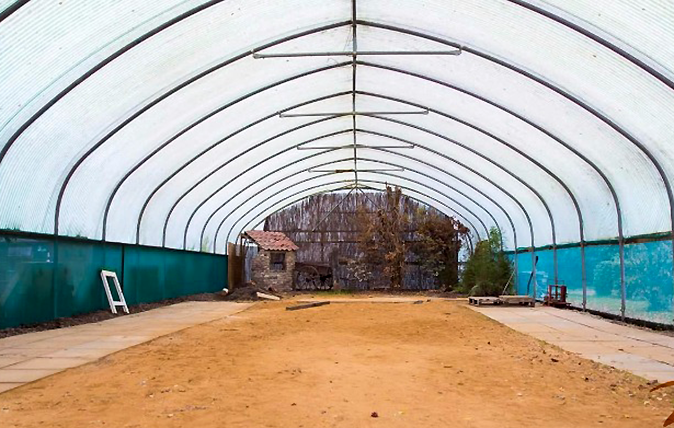Saving Britain’s butterflies: A new plan to help save our endangered species
Three-quarters of Britain's native butterfly species are in decline, but a wildlife centre in Lincolnshire is trying to reverse that trend.

The Baytree Owl and Wildlife Centre in Lincolnshire has launched an ambitious new project to protect some of Britain's butterflies and moths.
Over three-quarters of native species have falling numbers, according to Butterfly Conservation's report last year.
The causes for this decline aren't fully understood, but one thing is: conservation efforts can make a serious difference in reversing the trend. Take the Large Blue, for example: it was declared extinct in 1979, but is now thriving once more and is on-course to be removed from the 'red list' of endangered species.
To avoid other species getting into trouble, Baytree are hoping to raise £10,000 to turn a disused plastic tunnel into a native butterfly house.

It will contain four distinct habitats: a cottage garden, a wildflower meadow, a wooded area and a scrub area of nettles and brambles, to replicate the diverse environments of the British countryside.
These areas will provide food and shelter for the butterflies, and will also create an educational site for inspiring visitors to do more to help butterflies thrive in their gardens and local area.
"Butterflies and moths are often overlooked in favour of more cuddly creatures," said the centre's director Mark Birdsall.
Sign up for the Country Life Newsletter
Exquisite houses, the beauty of Nature, and how to get the most from your life, straight to your inbox.
"We want to change that by showing our visitors how important butterflies are and how they can help them to thrive in the wild.”
The tunnel was previously used for birds of prey, so is already standing – but money is needed to add heating, ventilation and UV light to the tunnel, as well as several structural repairs.
Baytree are hoping to raise the money needed via their crowdfunding page, which you can visit here – there are a range of different incentives available for those who pledge money towards the project.

Toby Keel is Country Life's Digital Director, and has been running the website and social media channels since 2016. A former sports journalist, he writes about property, cars, lifestyle, travel, nature.
-
 ‘It had the air of an ex-rental, and that’s putting it politely’: How an antique dealer transformed a run-down Georgian house in Chatham Dockyards
‘It had the air of an ex-rental, and that’s putting it politely’: How an antique dealer transformed a run-down Georgian house in Chatham DockyardsAn antique dealer with an eye for colour has rescued an 18th-century house from years of neglect with the help of the team at Mylands.
By Arabella Youens
-
 A home cinema, tasteful interiors and 65 acres of private parkland hidden in an unassuming lodge in Kent
A home cinema, tasteful interiors and 65 acres of private parkland hidden in an unassuming lodge in KentNorth Lodge near Tonbridge may seem relatively simple, but there is a lot more than what meets the eye.
By James Fisher
